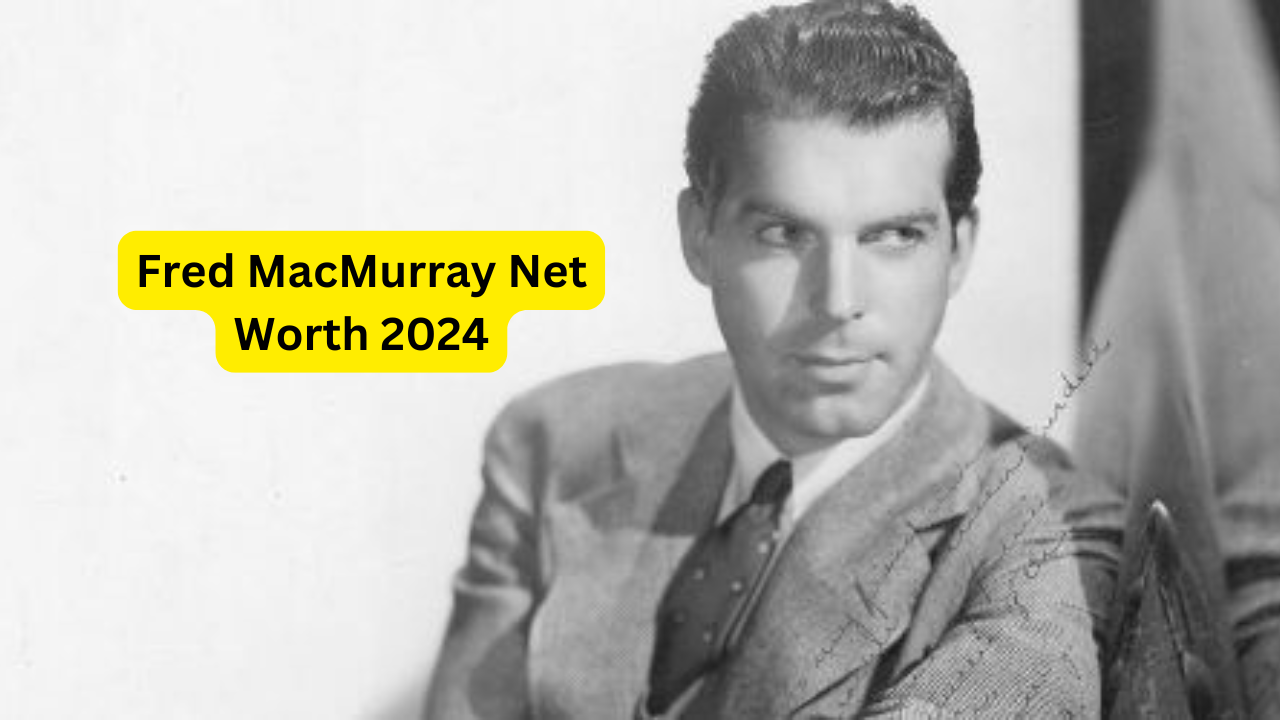Fred MacMurray was one of the most iconic actors of Hollywood’s Golden Age, remembered for his versatile performances in both comedic and dramatic roles. Born on August 30, 1908, MacMurray’s career spanned several decades, making him a household name and a beloved figure in American cinema and television. His charm and talent translated into a prosperous career that allowed him to amass a significant fortune. In this article, we’ll take a deep dive into Fred MacMurray’s net worth, how he built his wealth, and how his legacy continues to resonate. Fred MacMurray Net Worth 2024
Fred MacMurray’s Early Life and Rise to Stardom
Fred MacMurray was born in Kankakee, Illinois, and raised in a modest family. He attended Carroll College in Wisconsin, where he developed his love for music and acting. Starting as a saxophone player in local bands, MacMurray eventually made his way to Hollywood, where his natural charisma and tall, handsome frame made him an instant success.
His breakthrough role came in the 1930s with “The Gilded Lily” (1935), co-starring Claudette Colbert, which launched him into stardom. He quickly became one of Hollywood’s top box-office draws, starring in a variety of films, ranging from romantic comedies to film noirs. His remarkable performance in the 1944 classic “Double Indemnity”, directed by Billy Wilder, remains one of his most critically acclaimed roles.
Fred MacMurray’s Net Worth in 2024
By the time of his death in 1991, Fred MacMurray’s net worth was estimated to be around $150 million (adjusted for inflation). His wealth was accumulated through a combination of acting salaries, business ventures, and real estate investments.
Hollywood Success: A Lucrative Career in Film and Television
MacMurray was one of the highest-paid actors of his time, thanks to his ability to adapt to various genres. His steady stream of films in the 1930s and 1940s, followed by his success in the 1950s and 1960s, provided a continuous flow of income. Some of his notable films include:
- “The Egg and I” (1947) alongside Claudette Colbert
- “The Absent-Minded Professor” (1961), a Disney hit that solidified his relationship with the studio
- “The Shaggy Dog” (1959), another box-office smash from Disney
While his film career alone contributed greatly to his wealth, MacMurray’s financial success soared with his role in television. From 1960 to 1972, he starred in the popular TV show “My Three Sons”, one of the longest-running series in television history. His role as Steve Douglas earned him a handsome salary and residuals, further boosting his net worth.
Business Ventures and Smart Investments
Fred MacMurray was known for being a shrewd businessman, carefully managing his wealth and investments throughout his career. One of his smartest financial decisions was investing in real estate early on. He purchased large tracts of land, including a 1,750-acre ranch in Healdsburg, California, which became a family-owned winery, MacMurray Ranch. The value of this estate alone contributed significantly to his overall net worth.
Additionally, MacMurray invested in stocks, ensuring a steady increase in his wealth over time. His foresight in diversifying his income streams allowed him to live comfortably and secure his family’s financial future.
Fred MacMurray’s Relationship with Disney
Fred MacMurray is often remembered for his association with Walt Disney Studios. He starred in several Disney classics that were critical and commercial successes, further contributing to his wealth. His work with Disney, particularly as Professor Ned Brainard in “The Absent-Minded Professor” and “Son of Flubber”, made him one of the most recognized faces in family entertainment.
Notably, Fred MacMurray was the first person honored as a Disney Legend in 1987, a testament to his long-standing relationship with the studio and his impact on the Disney brand.
Philanthropy and Charitable Contributions
Fred MacMurray was known for his charitable efforts, often donating to causes close to his heart. He supported various children’s organizations and veterans’ charities throughout his life. His quiet generosity made a difference in many lives, and even in his passing, his philanthropic efforts continue to resonate.
Personal Life and Legacy
MacMurray married Lillian Lamont in 1936, and the couple had two adopted children. After Lillian’s death, MacMurray married actress June Haver in 1954, with whom he had two more children. His personal life was marked by a strong sense of privacy, and he remained out of the limelight when not working.
Fred MacMurray’s ranch, MacMurray Ranch, is still owned by the family and has been transformed into a vineyard, continuing the family’s connection to the land. Today, the winery is part of Gallo Wines, producing high-quality wines that reflect MacMurray’s love for the California countryside.
MacMurray passed away in 1991 at the age of 83, leaving behind a legacy of great performances and a lasting mark on both the entertainment industry and his family.
The Continued Growth of Fred MacMurray’s Estate
Even after his passing, Fred MacMurray’s net worth continues to grow due to his astute investments and the success of the MacMurray Ranch Winery. His family’s careful management of the estate and the ranch ensures that his wealth endures, benefiting future generations.
MacMurray’s legacy remains influential, with his films and television work still celebrated by fans and critics alike. His ability to transition from a movie star to a beloved television icon, combined with his smart financial decisions, set him apart as one of the most successful actors of his time.
Conclusion: Fred MacMurray’s Wealth and Enduring Influence
Fred MacMurray’s career in Hollywood spanned more than five decades, during which he built a fortune that, in today’s terms, would amount to approximately $150 million. His wealth was the result of a successful career in film and television, smart real estate investments, and a long-term association with Disney. His impact on American entertainment continues to be felt, and his legacy as both a performer and a businessman remains impressive.
